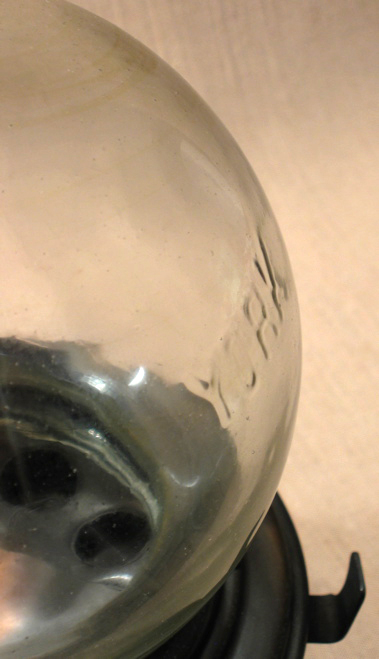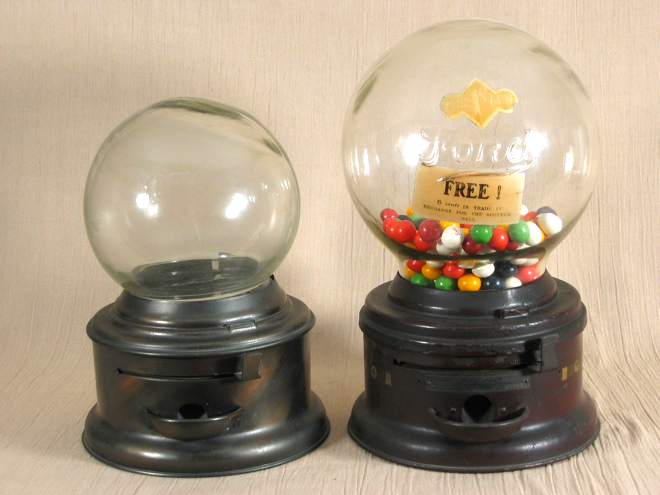___________________________________________________________________________________________
York


___________________________________________________________________________________________


Wallace N. Mason, Angelica, NY, patent appl. Nov. 24, 1917, granted Sept. 16, 1919; 9 1/4". The York is the forerunner of the Ford machines we all grew up with. Its body is the same size as that of the Ford, and the designs are very similar, but the York is not the Ford's twin. The embossed York globe is substantially smaller than the smallest of Ford's globes, and although the entire York is only a little more than 2 inches shorter than the early Fords, the size difference seems much greater than that because of the much smaller globe on the York. You can see this in the side-by-side comparison below. Every time I look at this picture I think I've measured the machines' heights incorrectly, and for awhile I'd go measure them again. I did that 4 times before I finally conceded that looks are deceiving---the York is always 9 1/4" tall, and the Ford is always 11 1/2" tall.

Like the Ford, the York is a small, simple machine specifically designed by Wallace Mason and his son, Ford, to be small and light, in contrast to the cast iron monstrosities of the day. As collectors we love those cast iron monstrosities, but I imagine they were less loved by the vendors who had to lug them around. The York has no branding or identification other than the 'YORK' embossed on the globe, and if the globe were missing, most people would look and think that it's a Ford missing the front tag---until they looked a little more closely. Then they'd see the tiered hold-down ring, would see no holes for the "missing" tag, and if they were really paying attention would see that the hole for coin access in the machine's bottom is smaller than that on the Ford. Then, if they'd read this page, they'd think, "Wow, this is a York!" If they hadn't read this page, they'd think, "I'm hungry, I wonder if I can grab a burger nearby."
The York was the foundation for the patent that covered the Ford machines, but only a handful were made, and few, if any, were used commercially. I suspect that the patent was filed and the design soon evolved into the Ford machine we all know and love. I know of only 4 Yorks that exist today, making it a rare model.
The example above is 100% original, including the copper flashing. It's missing the piece that goes through the coin access hole in the bottom and emerges through the top rear of the base, where it can be locked, but its missingness doesn't bother me because I know who lost it. It's part of a truly extraordinary story behind this specific machine, but I'm going to submit it to COCA magazine before I post it here.
How's that for a teaser? Stay tuned....
___________________________________________________________________________________________
©Small Vintage Vending 2003